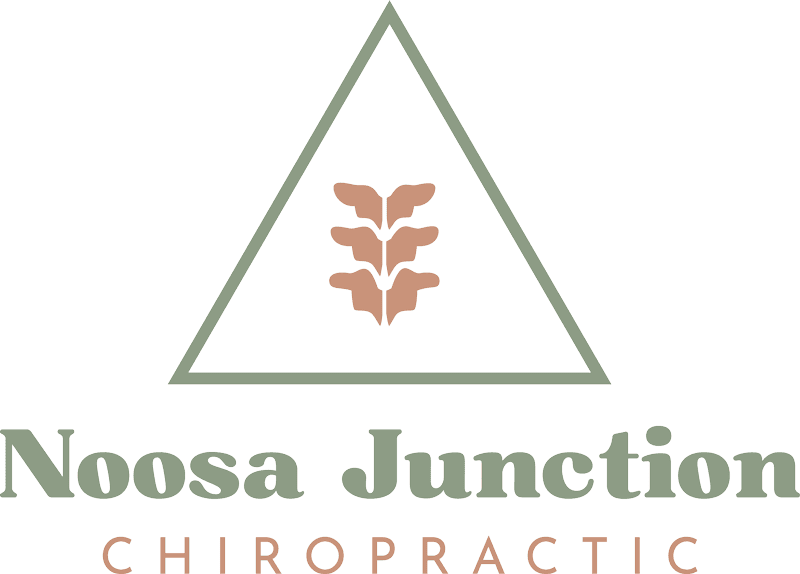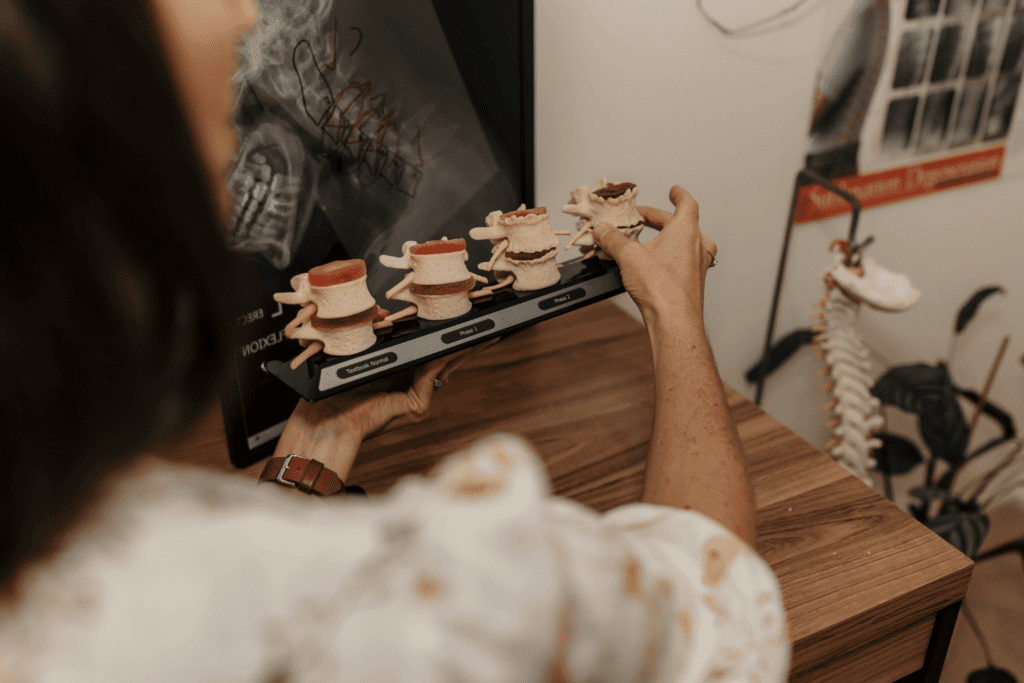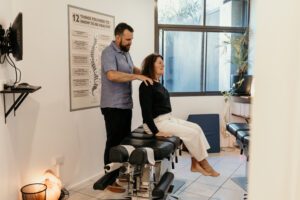Reading Time: 5min 50sec.
Maintaining a healthy spine is essential for sustaining your body’s structural integrity and overall function. A well-aligned spine reduces the risk of chronic pain, enhances your range of motion, and supports your body’s ability to perform daily activities easily. Advanced spinal fitness techniques, such as targeted exercises and proper posture practices, prevent spinal degeneration and enhance your body’s resilience against stress and injury.
By integrating these advanced spinal fitness strategies into your lifestyle, you can ensure that your spine remains strong, flexible, and capable of supporting your overall well-being. This proactive approach to spinal health mitigates the risks of spinal issues and contributes to a healthier, more vibrant life.
The Importance of Spinal Fitness
The spine is the backbone of your body’s structural integrity, playing a crucial role in supporting your overall health and well-being. It houses the spinal cord, responsible for transmitting signals between the brain and the rest of the body, making spinal health essential for maintaining proper nerve function. Poor spinal fitness can lead to chronic pain, reduced mobility, and a range of other health issues, including headaches, muscle tension, and even digestive problems. Spinal fitness chiropractic care focuses on aligning the spine to restore proper function and alleviate discomfort.

However, the benefits of chiropractic care are significantly enhanced when paired with a targeted exercise routine that strengthens and stabilises the spine. Regular visits to a chiropractor, combined with exercises tailored to improve core strength and flexibility, can help maintain optimal spinal alignment, prevent injuries, and promote overall physical health.
Core Strengthening for Spinal Support
While chiropractic adjustments are essential for correcting misalignments and improving nerve function, they are most effective when complemented by a proactive approach to spinal fitness. Incorporating exercises that focus on core strength, flexibility, and posture can help maintain the benefits of chiropractic care long-term.
The core muscles—including the abdominals, obliques, and lower back—serve as the foundation for spinal stability and support. By strengthening these muscles, you reduce the risk of spinal misalignments and improve overall posture and balance. Incorporating a core spinal fitness system into your routine can enhance the effectiveness of these exercises, ensuring your spine remains well-supported.
Effective Core Exercises
Planks:
Planks are essential for building core strength and endurance and supporting spinal health. Engage your entire core by holding a forearm plank with your body in a straight line from head to heels. Start with shorter holds, gradually increasing time as you strengthen. Regular planking improves core stability, aids spinal alignment, and reduces injury risk.
Bird Dogs:
Bird Dogs improve balance, coordination, and core stability by targeting the lower back and abdominals. Start on your hands and knees, then extend your right arm forward and left leg backwards, keeping both parallel to the floor. Hold briefly, maintaining a neutral spine and engaged core. Switch sides. This exercise strengthens spinal support muscles, enhancing posture and reducing back pain.
Dead Bugs:
Dead Bugs reinforce core stability and protect the lower back. Lie on your back with arms extended upward and knees bent at 90 degrees. Press your lower back into the floor, then slowly lower your right arm and left leg toward the floor while keeping your back flat. Return to the start and switch sides. This exercise stabilises the spine, helping to prevent injuries and maintain spinal fitness.
Maintaining flexibility is essential for spinal fitness, as it ensures that the muscles surrounding the spine can move freely without causing strain. Tight muscles, particularly in the hips, hamstrings, and lower back, can pull the spine out of alignment, leading to pain, discomfort, and long-term issues such as herniated discs or sciatica. Regular stretching helps maintain muscle flexibility, reduces tension, and supports proper spinal alignment by promoting balanced muscle function.
Incorporating a consistent stretching routine that targets key areas like the hip flexors, hamstrings, and shoulders can significantly enhance spinal mobility, prevent injuries, and improve overall posture. This proactive approach alleviates existing discomfort and fortifies the spine against future stressors, contributing to long-term spinal health.
Effective Flexibility Exercises
Cat-Cow Stretch:
This dynamic stretch helps mobilise the spine and alleviate tension in the back muscles. Begin on your hands and knees with your wrists under your shoulders and knees under your hips. Inhale as you arch your back, lifting your tailbone and chest toward the ceiling (Cow), then exhale as you round your back, tucking your chin to your chest (Cat). Move slowly and synchronise your breath with each movement. This exercise enhances spinal flexibility and can help relieve stiffness in the back.
Child’s Pose:
Child’s Pose is a restorative yoga position that stretches the lower back, hips, and shoulders while promoting relaxation. Start on your hands and knees, then slowly lower your hips back toward your heels and extend your arms forward, lowering your forehead to the floor. Hold this position for several deep breaths, allowing the stretch to release tension in your back and shoulders. It’s a great way to calm the nervous system and improve flexibility in the lower back.
Seated Forward Bend:
This stretch targets the hamstrings and lower back, promoting flexibility and reducing muscle tightness. Sit on the floor with your legs extended straight in front of you. Inhale to lengthen your spine, then exhale as you reach forward towards your toes, keeping your back as straight as possible. Hold the stretch for 20-30 seconds, focusing on the stretch in your hamstrings and lower back. This exercise helps increase flexibility in the posterior chain, supporting better spinal alignment and reducing back strain.
Combining Exercise with Chiropractic Care
Integrating targeted exercise routines with regular chiropractic care is a powerful approach to achieving and maintaining optimal spinal health. Chiropractors play a crucial role by assessing your needs and providing personalised recommendations, ensuring your fitness routine is tailored to your unique conditions and goals. Combining chiropractic adjustments with core-strengthening and flexibility exercises creates a solid foundation for maintaining spinal alignment.
At Noosa Junction Chiropractic, the holistic approach provides expert, personalised care for each patient. The team offers precise adjustments to correct misalignments and works with you to create a customised exercise plan. This combination keeps your spine strong, flexible, and resilient, improving your overall quality of life. By integrating these practices, Noosa Junction Chiropractic supports immediate relief and long-term health, adding value to your wellness journey. If you’re searching for a “chiro near me” in the Sunshine Beach area at Noosa Heads, Noosa Junction Chiropractic is an excellent choice for comprehensive care.

Practical Tips for Integrating Exercise and Chiropractic Care
To effectively integrate exercise with chiropractic care, consult your chiropractor to develop a personalised fitness plan that complements your adjustments. Focus on exercises that strengthen your core and improve flexibility, as these will support spinal alignment and overall health. At Noosa Junction Chiropractic, you’ll receive expert guidance on balancing your workouts with your chiropractic care, ensuring optimal results. Regular communication with your chiropractor will help you stay on track and adjust your routine for continued improvement.
Consistency is Key:
Make these exercises a regular part of your daily routine to build lasting strength and flexibility. Consistent practice is crucial for gradually improving your spinal fitness and overall well-being. Even short, daily sessions can lead to significant benefits over time.
Listen to Your Body:
Always pay close attention to how your body responds to exercise. If you experience pain or discomfort, stop and reassess your movements. It’s important not to push yourself too hard, especially if you’re new to exercise or recovering from an injury. Gradually increase the intensity as your body adapts.
Seek Professional Guidance:
Work closely with your chiropractor or a certified fitness professional to ensure that you’re performing exercises with proper form and technique. This not only prevents injury but also maximises the benefits of your workout. A tailored exercise plan developed with the guidance of a professional, like those at Noosa Junction Chiropractic, can significantly enhance your results.
Stay Hydrated:
Keeping hydrated is essential for optimal muscle function and recovery. Water aids in nutrient transport, joint lubrication, and toxin removal, all of which are crucial for maintaining spinal health and supporting the benefits of chiropractic care. Aim to drink water throughout the day, especially before and after exercise.
Conclusion
Achieve optimal spinal fitness by incorporating core strengthening and flexibility exercises into your daily routine. These strategies amplify the benefits of chiropractic care and play a crucial role in improving overall physical health and well-being. By consistently working on your spinal fitness, you can enhance posture, reduce the risk of injury, and experience greater mobility and comfort in everyday life. Embrace this holistic approach to wellness and discover the transformative effects of a strong, flexible, and well-aligned spine on your overall quality of life.





